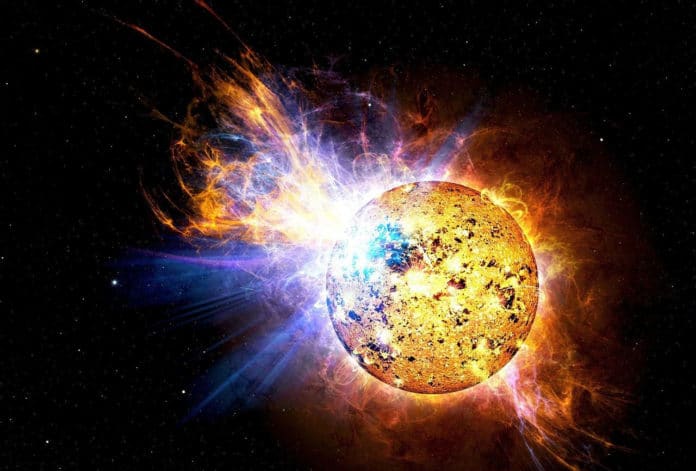Solar flares are an explosion of energy caused by tangling, crossing, or reorganizing of magnetic field lines near sunspots. In extreme cases, solar flares can disable radio connections and power stations on Earth, yet they are additionally at the basis of stunning space weather phenomena. The Northern Lights, for example, are linked to a solar flare that upsets the magnetic field of the Sun to such a degree, that a bubble of solar plasma can escape from the atmosphere of the Sun.
Using satellites and solar telescopes, scientists have understood a lot about the physical processes that take place during a solar flare.
They have known that solar flares convert energy from magnetic fields into heat, light, and motion energy very efficiently. These processes are commonly visualized as the standard 2-D solar flare model, though the details of these illustrations have never been confirmed.
Now, Plasma astrophysicists at KU Leuven have created a simulation of the physical processes that occur during a solar flare using Flemish supercomputers and a new combination of physical models.
Professor Rony Keppens explains, “Our work also makes it possible to calculate the energy conversion efficiency of a solar flare. We can calculate this efficiency by combining the strength of the Sun’s magnetic field at the feet of the flare with the speed at which those feet move. If we can complete our observations in time, that is, because everything happens within tens of seconds to a few minutes.”
“We converted the results of the numerical simulation into virtual observations of a solar flare, whereby we imitated telescopes in all relevant wavelengths. This allowed us to upgrade the standard solar flare model from a textbook illustration to an actual model.”
Journal Reference:
- Wenzhi Ruan et al. A Fully Self-consistent Model for Solar Flares. The Astrophysical Journal. DOI: 10.3847/1538-4357/ab93db
